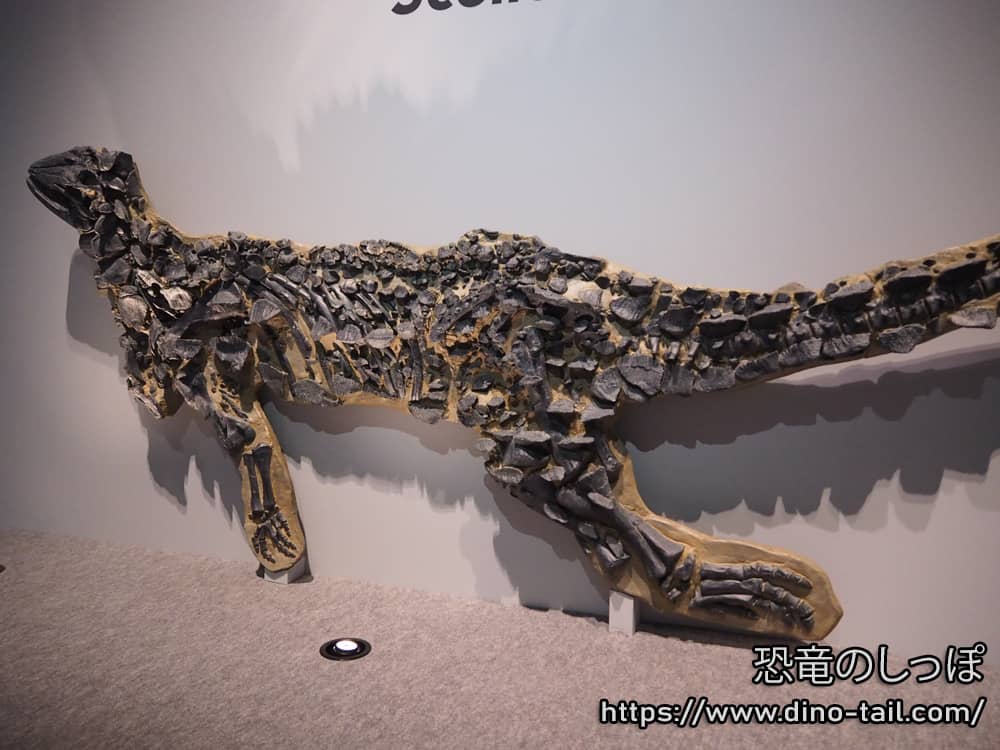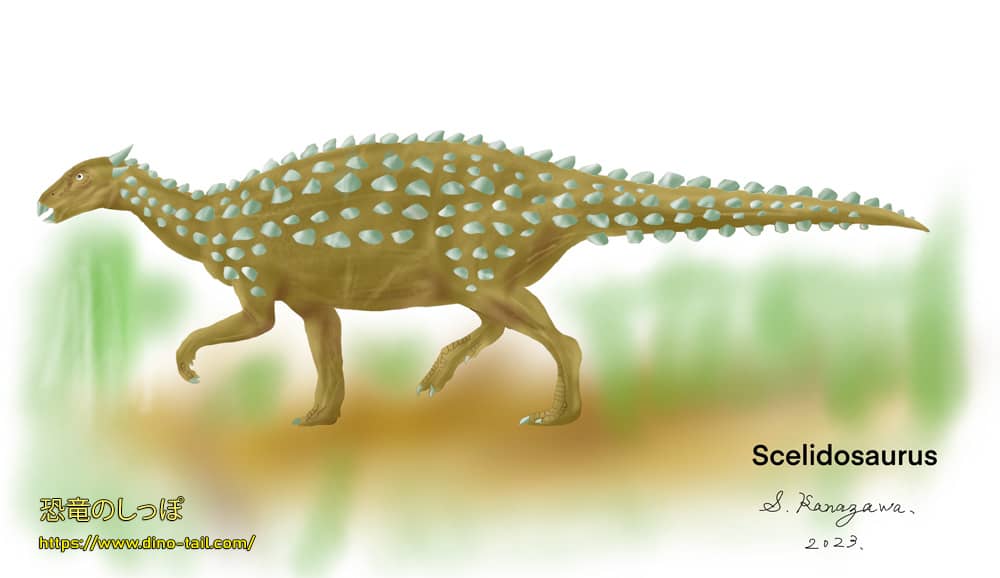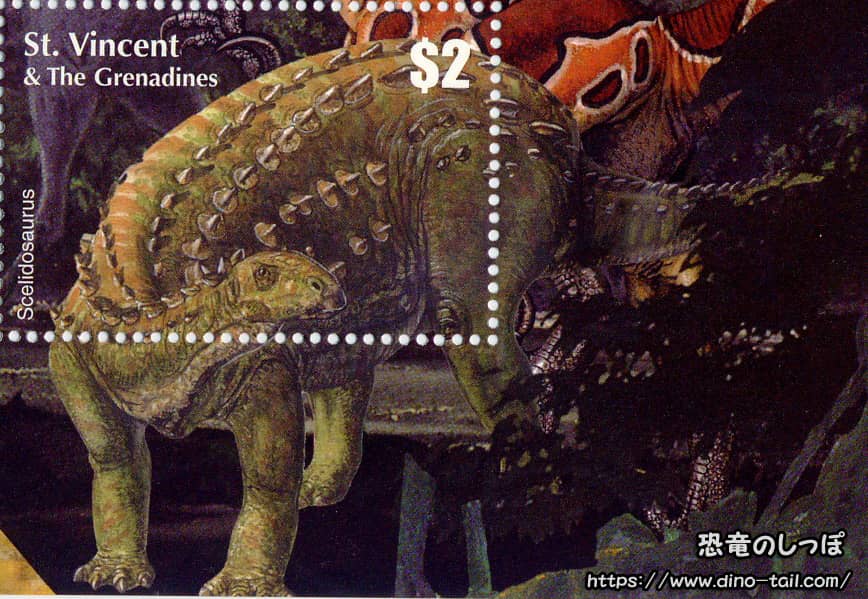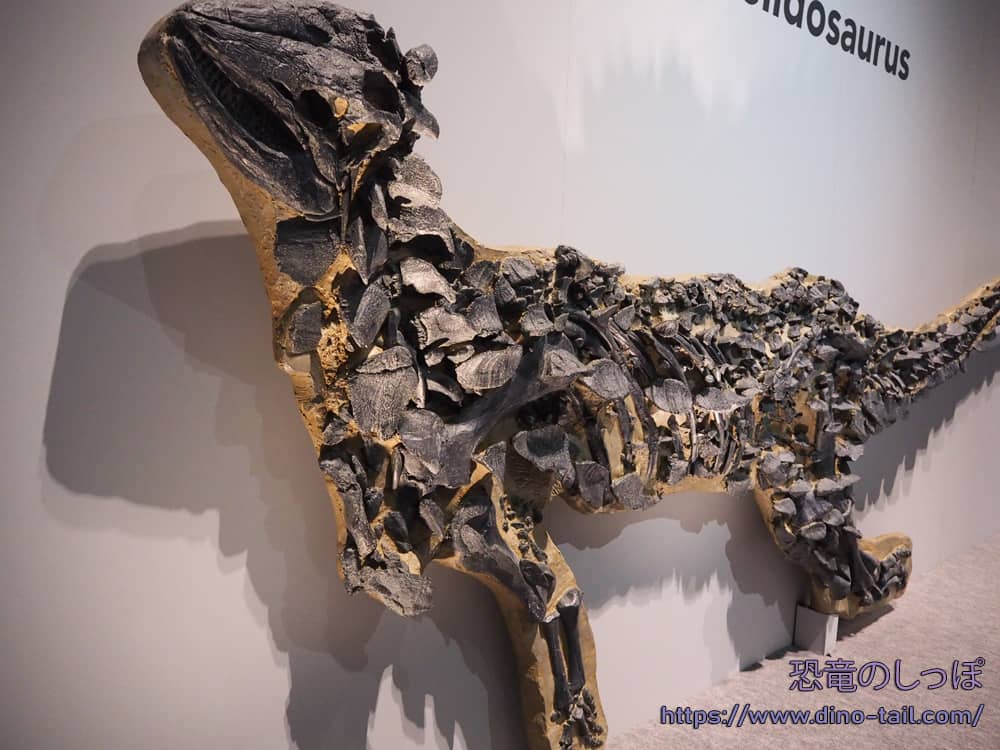About Scelidosaurus
| Scientific Name (Genus) | Scelidosaurus |
| Meaning of Name |
Limb lizard
skelos (limb) [Greek] - eidos (form) [Greek] - sauros (lizard) [Greek] |
| Classification | Ornithischia, Thyreophora |
| Total Length | Approx. 4m |
| Diet | Herbivorous |
| Period | Early Jurassic (196.5 - 183 million years ago) |
| Species | Scelidosaurus harrisonii |
| Year of Paper Publication | 1859 |
| Description Paper |
"Palaeontology", In: Encyclopædia Britannica Edition 8, Volume 17, p.150
by R. Owen 1859. |
Features: The 'Blueprint' of the Thyreophora
Scelidosaurus was an early thyreophoran that possessed the basic features that can be called the 'blueprint' for both the Stegosauria and Ankylosauria groups that appeared in later periods. It lived during the Early Jurassic period (about 196.5 - 183 million years ago).
It is estimated to have been about 4 meters long and weighed 270 kg.
Surprisingly Detailed Armor and Skin

Recent research has revealed its defense system in surprising detail. The surface of its body was covered with a dense array of osteoderms of various sizes .
- From the neck to the back and tail, several rows of large, keeled bony plates ran symmetrically.
- On the sides of its body were sharp, sideways-curving osteoderms, like goat horns.
- And the gaps between these large pieces of armor were filled with small, granular scales, similar to those on the soles of a bird's feet.
In life, it is thought that this bony armor was further covered by a keratinous sheath, making it even larger and more robust.
Surprising Ecology
Scelidosaurus was primarily quadrupedal, but its hind limbs were much more developed than its forelimbs. From this, it is inferred that it was able to stand on two legs when eating plants from high places.
(*1) What are Osteoderms?
According to the dictionary, it is 'bone of dermal origin that is formed directly in the dermis of the skin.' It originated from keratinous scales that acquired a bony component.
Representative examples of extant vertebrates with osteoderms are crocodiles (reptiles) and armadillos (mammals). In addition to defense, they also seem to play a role in insulation.

The Oldest Ornithischian

As of June 2025, Scelidosaurus is the 'oldest ornithischian dinosaur' among the dinosaurs discovered.
Before Scelidosaurus lived, about 196.5 million years ago, saurischian dinosaurs such as Eoraptor and Coelophysis (theropods) and Plateosaurus (sauropodomorphs) lived in the Late Triassic (about 235 - 208 million years ago), but further discoveries and research are needed to know when and how ornithischian dinosaurs appeared.

The 'Rosetta Stone' of Dinosaur Research: A Rediscovery After 150 Years
Scelidosaurus is historically very important as the first dinosaur in the world to be found with a nearly complete skeleton , discovered in England in 1858. However, its most famous specimen lay unstudied in the collection of a London museum for over 150 years.
Since 2020, the British paleontologist Dr. David Norman has thoroughly re-examined this specimen using the latest technology and has published its surprising details one after another. This fossil, with its amazing preservation from the skull to the arrangement of the armor and even skin impressions, can truly be called the 'Rosetta Stone' for unraveling the mystery of the evolution of thyreophoran dinosaurs.
This research has clarified many previously unknown points, and Scelidosaurus has once again come into the spotlight as one of the 'most well-understood primitive dinosaurs.'
